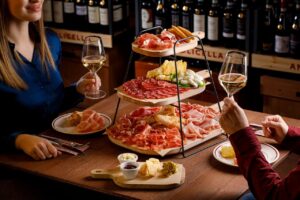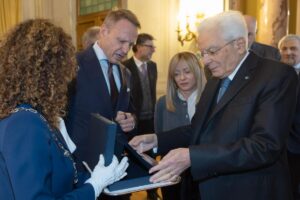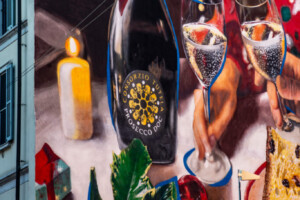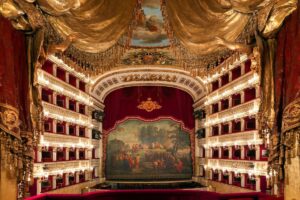That food and wine tourism is now a relevant “asset” for the national economy is something well known, but, probably, it has exceeded the expectations generated a few years ago. A sector that is worth 2.5 billion euros, and an international phenomenon that moves 14 million tourists, but one that Italians particularly like, and one that appears to be increasingly growing, starting with the numbers that testify to a certain interest.
As the tourist season is about to get into full swing, an interesting insight, including on the food and wine route, comes from the report “Traveling Roads. Maps, practices, routes, and communication paths of experiential tourism”, edition No. 4 of the “Communication, Media and Tourism” research project, the result of a collaboration between Certa (Television and Audiovisual Research Center) of the Catholic University of Milan and Publitalia ’80. A survey that focused on men and women between the ages of 18 and 74 who have made trips (at least one night, two days) related to one of the five types of experiential tourism, and therefore also food and wine tourism, in the last year. On a general level, 75% of Italians, 25 million, have taken an “unconventional” trip in the last year, demonstrating a trend, that of experiential vacations, which is increasingly in vogue and which, of course, also concerns wine & food.
Traveling for food and wine reasons is something that is done, oftentimes, as a “family”, and therefore in two to three people, the most common number. Most people choose an independent organization for the trip, although they often prefer to join already organized groups of friends, thus turning the experience into a collective moment. The food and wine tourist does not take such long trips, both in distance (316 km vs. 342 km average for the experiential tourist) and in duration (62% rely on the weekend formula) and appears autonomous in identifying destinations but also in booking the trip. Among the preferred types of lodging, in first place is the B&B (32.4%, the highest figure among the five designated tourist profiles), ahead of hotel/resort and agritourism, almost lined up in order of liking, while the average budget of the food and wine tourist is 748 euros (compared to the 845 average of the experiential tourist).
When referring to food and wine experiences, the first territory that comes to the mind of travelers is Emilia-Romagna (49%), the “Food Valley” of Italy, rich in culinary traditions, but Campania (46.4%) and Tuscany (44.6%), regions historically associated with the culture of good food and wine, are also going strong, while, also in the top 5, two other regions of southern Italy, Puglia (41.8%) and Sicily (39.6%), fall into the top 5.
Participation in fairs and festivals related to food (71%) and tastings in wineries or farms (71%) are the activities that predominantly characterize the choices and preferences of the food and wine traveler; also relevant is the figure of those who travel to learn about and consume in establishments that are attentive to healthy, responsible and sustainable cuisine (55%), demonstrating a transformation in the needs and philosophy of this type of traveler. Importance is also given to the discovery of traditions through the attendance of roads and itineraries related to taste, wine or flavors (45% of travelers support this), while 37% associate wine and food travel with the opportunity to experience high prestige restaurants and establishments (gourmet tourism, with a predilection also for the winter season, the least “popular” among wine tourists) and 17% with the opportunity to take practical cooking lessons and courses.
That of “Taste” is the concept most associated with travel of a food and wine nature, and the combination of food and wine, is identifying with this type of travel. If the opportunity to regenerate for the food and wine tourist is the main motivation that leads him to travel (56%), the opportunity to experience activities and get to know places never visited stands out compared to the other profiles. Thus, “discovery” turns out to be a characterizing aspect of the idea of a vacation oriented to the taste and culinary traditions of an area. These are all elements, the research explains, that are also combined with the idea of taking care of oneself and socializing with others; food and wine travel is in fact a continuous balance between individual well-being and the pleasure of conviviality.
Copyright © 2000/2025
Contatti: info@winenews.it
Seguici anche su Twitter: @WineNewsIt
Seguici anche su Facebook: @winenewsit
Questo articolo è tratto dall'archivio di WineNews - Tutti i diritti riservati - Copyright © 2000/2025









































































































































































































